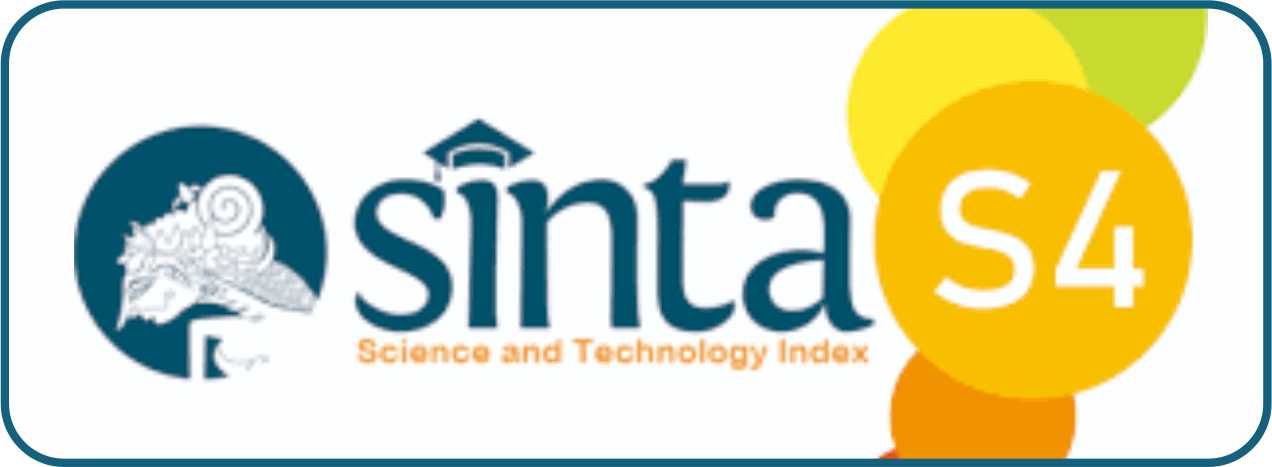Application of the K-Nearest Neighbor Method in Determining Web-Based Early Childhood Development
Abstract
Keywords
Full Text:
PDFReferences
Lockyer, S., White, A., and Buttriss, J. L. (2018). Biofortified crops for tackling micronutrient deficiencies–what impact are these having in developing countries and could they be of relevance within europe?. Nutrition Bulletin, 43(4), 319-357.
Jaman, J., Martić, K., Rasic, N., Markulin, H., and Haberle, S. (2021). Is the use of specific time cut-off or “golden period” for primary closure of acute traumatic wounds evidence based? a systematic review. Croatian Medical Journal, 62(6), 614-622.
Helm, S., Harmon, P. C., Noe, C., Calodney, A. K., Abd-Elsayed, A., Knezevic, N. N., and Racz, G. B. (2021). Transforaminal epidural steroid injections: a systematic review and meta-analysis of efficacy and safety. Pain Physician, 24(S1), S209-S232.
Lian, Z., and Van Ryzin, G. (2021). Optimal growth in two-sided markets. Management Science, 67(11), 6862-6879.
Ahluwalia, N. (2020). Nutrition monitoring of children aged birth to 24 mo (B-24): data collection and findings from the NHANES. Advances in Nutrition, 11(1), 113-127.
Khalatbari-Soltani, S., and Marques-Vidal, P. (2018). Adherence to hospital nutritional status monitoring and reporting guidelines. PloS One, 13(9), 1-13.
Besora-Moreno, M., Llauradó, E., Tarro, L., and Solà, R. (2020). Social and economic factors and malnutrition or the risk of malnutrition in the elderly: a systematic review and meta-analysis of observational studies. Nutrients, 12(3), 1-16.
Majid, M. I., dan Linuwih, S. (2019). Pengembangan unit kegiatan belajar mandiri (UKBM) materi usaha dan energi berbasis pembelajaran kontekstual untuk meningkatkan pemahaman konsep siswa. UPEJ Unnes Physics Education Journal, 8(3), 228-238.
Robertson, A. G., Easter, M. M., Lin, H., Frisman, L. K., Swanson, J. W., and Swartz, M. S. (2018). Medication-assisted treatment for alcohol-dependent adults with serious mental illness and criminal justice involvement: effects on treatment utilization and outcomes. American Journal of Psychiatry, 175(7), 665-673.
Bell, J., and Strang, J. (2020). Medication treatment of opioid use disorder. Biological Psychiatry, 87(1), 82-88.
Chen, L., Wang, C., Chen, J., Xiang, Z., and Hu, X. (2021). Voice disorder identification by using hilbert-huang transform (HHT) and k-nearest neighbor (KNN). Journal of Voice, 35(6), 1-11.
Anggoro, D. A., and Kurnia, N. D. (2020). Comparison of accuracy level of support vector machine (SVM) and k-nearest neighbors (KNN) algorithms in predicting heart disease. International Journal, 8(5), 1689-1694.
Muhathir, M., Sibarani, T. T. S., and Al-Khowarizmi, A. K. (2020). Analysis k-nearest neighbors (KNN) in identifying tuberculosis disease (TB) by utilizing hog feature extraction. Al'adzkiya International of Computer Science and Information Technology (AIoCSIT) Journal, 1(1), 226-235.
Lu, J., Qian, W., Li, S., and Cui, R. (2021). Enhanced k-nearest neighbor for intelligent fault diagnosis of rotating machinery. Applied Sciences, 11(3), 1-14.
Rajaguru, H., and SR, S. C. (2019). Analysis of decision tree and k-nearest neighbor algorithm in the classification of breast cancer. Asian Pacific Journal of Cancer Prevention: APJCP, 20(12), 3777–3781.
Himeur, Y., Alsalemi, A., Bensaali, F., and Amira, A. (2021). Smart power consumption abnormality detection in buildings using micromoments and improved k‐nearest neighbors. International Journal of Intelligent Systems, 36(6), 2865-2894.
Ula, M., Ulva, A. F., Saputra, I., Mauliza, M., and Maulana, I. (2022). Implementation of machine learning using the k-nearest neighbor classification model in diagnosing malnutrition in children. Multica Science and Technology (MST) Journal, 2(1), 94-99.
Marniati, M., Putri, E. S., Sriwahyuni, S., Khairunnas, K., and Duana, M. (2020). Knowledge study, income level and socio-culture of the nutritional status of toddler. Journal of Nutrition Science, 1(2), 65-71.
Low, D. W., Jamil, A., Md Nor, N., Kader Ibrahim, S. B., and Poh, B. K. (2020). Food restriction, nutrition status, and growth in toddlers with atopic dermatitis. Pediatric Dermatology, 37(1), 69-77.
Riley, L. K., Rupert, J., and Boucher, O. (2018). Nutrition in toddlers. American Family Physician, 98(4), 227-233.
DOI: https://doi.org/10.17509/coelite.v2i2.56919
Refbacks
- There are currently no refbacks.
Journal of Computer Engineering, Electronics and Information Technology (COELITE)
is published by UNIVERSITAS PENDIDIKAN INDONESIA (UPI),
and managed by Department of Computer Enginering.
Jl. Dr. Setiabudi No.229, Kota Bandung, Indonesia - 40154
email: coelite@upi.edu
e-ISSN: 2829-4149
p-ISSN: 2829-4157




